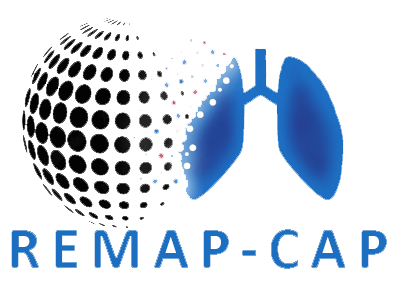Effect of Hydrocortisone on Mortality and Organ Support in patients with Severe COVID-19
The REMAP-CAP COVID-19 Corticosteroid Domain Randomized Clinical Trial
- 06 October 2020
- Author(s): The Writing Committee for the REMAP-CAP Investigators
- Journal: JAMA
OBJECTIVE
To determine whether hydrocortisone improves outcome for patients
with severe COVID-19.
DESIGN, SETTING, AND PARTICIPANTS
An ongoing adaptive platform trial testing multiple
interventions within multiple therapeutic domains, for example, antiviral agents,
corticosteroids, or immunoglobulin. Between March 9 and June 17, 2020, 614 adult patients
with suspected or confirmed COVID-19 were enrolled and randomized within at least 1
domain following admission to an intensive care unit (ICU) for respiratory or cardiovascular
organ support at 121 sites in 8 countries. Of these, 403 were randomized to open-label
interventions within the corticosteroid domain. The domain was halted after results from
another trial were released. Follow-up ended August 12, 2020.
INTERVENTIONS
The corticosteroid domain randomized participants to a fixed 7-day course of
intravenous hydrocortisone (50mg or 100mg every 6 hours) (n = 143), a shock-dependent
course (50mg every 6 hours when shock was clinically evident) (n = 152), or no
hydrocortisone (n = 108).
MAIN OUTCOMES AND MEASURES
The primary end pointwas organ support–free days (days
alive and free of ICU-based respiratory or cardiovascular support) within 21 days, where
patients who died were assigned –1 day. The primary analysis was a bayesian cumulative
logistic model that included all patients enrolled with severe COVID-19, adjusting for age, sex,
site, region, time, assignment to interventions within other domains, and domain and
intervention eligibility. Superiority was defined as the posterior probability of an odds ratio
greater than 1 (threshold for trial conclusion of superiority >99%).
RESULTS
After excluding 19 participantswhowithdrew consent, therewere 384 patients (mean
age, 60years;29%female) randomized to the fixed-dose (n = 137), shock-dependent (n = 146),
and no (n = 101) hydrocortisone groups; 379 (99%) completed the study andwere included in
the analysis. The mean age for the 3 groups ranged between 59.5 and 60.4 years; most patients
were male (range, 70.6%-71.5%); mean body mass index ranged between 29.7 and 30.9; and
patients receiving mechanical ventilation ranged between 50.0%and 63.5%. For the fixed-dose,
shock-dependent, and no hydrocortisone groups, respectively, the median organ support–free
dayswere0(IQR, –1 to 15),0(IQR, –1 to 13), and0(–1 to 11) days (composed of 30%, 26%, and
33%mortality rates and 11.5, 9.5, and 6 median organ support–free days among survivors). The
median adjusted odds ratio and bayesian probability of superioritywere 1.43 (95%credible
interval,0.91-2.27) and 93%for fixed-dose hydrocortisone, respectively, andwere 1.22 (95%
credible interval,0.76-1.94) and80%for shock-dependent hydrocortisone compared with
no hydrocortisone. Serious adverse eventswere reported in 4 (3%), 5 (3%), and 1 (1%) patients
in the fixed-dose, shock-dependent, and no hydrocortisone groups, respectively.
CONCLUSIONS AND RELEVANCE
Among patients with severe COVID-19, treatment with a 7-day
fixed-dose course of hydrocortisone or shock-dependent dosing of hydrocortisone,
compared with no hydrocortisone, resulted in 93%and 80% probabilities of superiority with
regard to the odds of improvement in organ support–free days within 21 days. However, the
trial was stopped early and no treatment strategymet prespecified criteria for statistical
superiority, precluding definitive conclusions.







